AI-powered coding automation: The state of the art and future direction
Healthcare spend continues to rise — and hospitals and health systems are looking for new ways to increase efficiencies, expedite payments and cut costs. According to a recent National Bureau of Economic Research working paper, the deployment of AI automation technologies could significantly reduce that spend — and help optimize the revenue cycle. Andrew Lockhart, CEO of Fathom, said that over the past two years, there has been increased attention on AI-based coding automation — and new solutions are emerging with exciting capabilities that can change the face of revenue cycle management.
“Providers have been dealing with persistent workforce challenges post-pandemic, and it’s been difficult to find qualified coders as well as deal with greater volumes that are harder and harder to support,” Lockhart said. “There’s a big administrative burden, and any tools that can be brought in to help with that are of benefit.”
To understand both the opportunities and challenges that AI-powered coding automation poses for healthcare organizations, Fathom hosted a lively roundtable discussion at the Healthcare Financial Management Association’s 2023 Annual Conference in Nashville, Tennessee. The event featured participants from a variety of healthcare organizations who shared their experiences, challenges and perspectives on current and future automated technologies that will change the way hospitals and health systems do business.
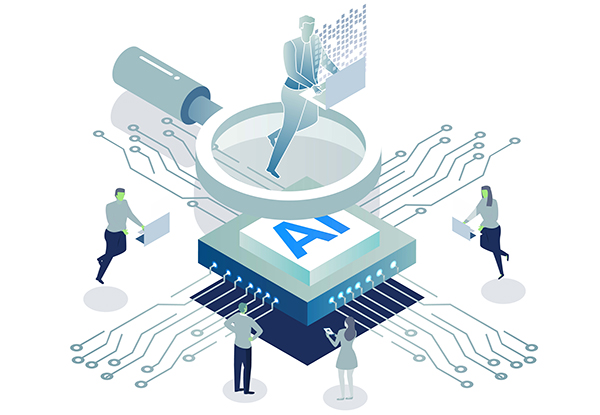
Which components of the revenue cycle do you think are most urgent for automation?
Tanya Srdanovic: One area is with clinical documentation improvement (CDI) and provider documentation. Using AI to automate medical record reviews by applying both structured and unstructured data and information to assist clinical documentation reviews can greatly support complete and accurate provider documentation, diagnosis/procedure/charge assignment and revenue capture. Much time and effort are used by review teams to ensure accurate and complete physician documentation supported by clinical evidence in the medical record. This type of automation would support CDI as well as denials management with quick and effective information gathering for payer appeals.
Candice Powers: The pre-bill edits space is also an area of interest. We do a lot of that — something gets kicked back for review because something was inadvertently omitted from the record. Having the ability to go through the structured and unstructured data to pull out those top pre-bill edits would be great. I also see great opportunity in AI solutions handling monotonous tasks like pulling general X-ray, mammogram and pathology results, and other information.
Kerry Gillespie: Insurers are using AI to drive their processes. Because of that, what we really need is a way to counteract or counterbalance their processes with an AI engine that understands what insurers will do before they do it, based on the data regarding everything those insurers have done in the past. Then we could go to insurers with a chart and a document or bill that’s already ready to be paid. That could eliminate thousands and thousands of hours of manual labor on the revenue cycle, billing and collecting side.
How does coding automation fit into your organization’s broader AI interest or mandate? What is driving these AI priorities for your organization?
Dawn Castro: It’s a top priority. We’re at the point now where we have to decide whether to partner with someone for a labor arbitrage play because we’re in a very decentralized model right now. We need to figure out what we can automate before we decide to hire folks.
Terri Meier: Finding people to hire is my first priority. Coders are hard to come by in Arkansas. Even harder because we haven’t kept up with the salaries they can earn elsewhere. Our labor market is small — and then we’re opening up new clinics, a new hospital building and another new hospital. My volumes are increasing, and it’s the high-volume, low-dollar stuff we need to find ways to manage.
Gillespie: Computer-assisted coding has been around for a while and it’s not true AI-based coding. What we really need to get to is true AI-based coding that can detect that a patient came to the hospital for a particular reason, the order has this associated ICD-10 code, and then can bring that into the coding process to determine which specific CPT-4 code is assigned, which determines what charge is assigned, and so on. That should all be inside the box so when it gets to the chart, it only requires a quick review by an individual. Or even, in some cases, a person doesn’t have to review; it just goes on the chart. There’s a gap right now between what we already have and truly AI-driven computer automated coding. We need to get to the point where 90% of the charts are automatically coded. Inpatient is really the Holy Grail. If we can automate that and put in AI, that’s where the value is.
Andrew Lockhart: The tech is already there. We have emergency departments where over 95% of the encounters are fully automated. Within the next two years, 90-95% of a given health system’s volume should be fully automated.
What are your organization’s greatest barriers to implementing AI for coding and how do you see those barriers changing over time?
Seth Katz: There are a couple. One, we already discussed what computer-assisted coding is like. They are basically all the same — and the companies out there doing AI-coding are very different. Some are doing machine learning, others robotic process automation. You have to choose which one you think is best, which one will support your goals and which one will grow over time. So, the first challenge is what you can afford. The second challenge is that big coding companies don’t have anything in the pipeline for this. I doubt they’re going to go willingly and give up the coding space. They are probably going to try to buy companies, which could be good or bad. I want to know which companies the big players will buy, and what they will do with them. Finally, you have to find some equilibrium. As you increase specialties, what kind of investment do you need just to break even, then start to have actual savings? That’s why we’ve been looking at AI-automation for two years, but we remain hesitant to sign a contract.
Powers: It’s a matter of resources and projects. Being able to prove return on investment takes a lot of resources. In many cases, health systems have outgrown the resources, particularly within the revenue cycle, which makes automation all the more critical. No one would say, “Oh no, we don’t need that.” But determining the easiest test lift and integration is hard. We all have underutilized systems already. So, a big challenge is how to drive engagement and eliminate the things we have that aren’t working as effectively, so we can sell it to the C-suite and get the support we need behind it to make it successful.
Meier: It’s also about trust. It’s a big change and it requires a certain level of trust when you’ve been doing things the same way for a long time. Coding really hasn’t changed for a long time. Other than some of this computer-assisted stuff, there hasn’t been any major technology introduction. Until you can get people to trust the new systems, it will be a challenge to go from a “No” to a “Yes.”
What factors do you view as being most important when comparing automation solutions?
Srdanovic: Success rate.
Meier: Compliance.
Powers: And I’d add research and development, too. Healthcare is changing every five minutes. If you’re going to partner with a company, you want to do it long term. How will that company keep up with the changing environment? How will they allow me to be more agile internally as the external environment changes? There’s also price, and I’d add in no disruption in volume. All of us are seeing staffing challenges and we have that retraining curve.
Castro: I’d add service. You’re looking for a strong rollout plan that includes what the organizational change management will look like. [One] of the biggest issues I’ve seen with things we’ve tried to do is folks not understanding what the organizational change management aspect of it will be. Making sure people level set what that is and prepare for [those changes in advance] is important.
Gillespie: You want to be quick to market, but you don’t want to be first. It’s important that any kind of organization bringing an automated product has experience and some kind of testing ground that is real. Pharmaceuticals go through a number of different test phases before they can bring a drug to market. There should be that same level of rigor around implementing coding automation or any other type of automation that touches the medical record. It has to be vetted, it has to be tested, tried and true. Only then should the market accept it.
Lockhart: The low marginal cost of AI means that these solutions should be imminently testable. There is always setup cost and such, but make the vendors bet on themselves. Set conditions such that you have the optionality and don’t absorb costs, but if your criteria are met, the vendor has the contract.
How are you thinking about workforce planning and training in the age of AI tools?
Meier: At UAMS, we have a headcount in our budget. I am going to be implementing some autonomous coding and take some headcount and reclassify them to a different position because revenue cycle is always short-staffed.
Powers: You can also use that coding staff to mitigate some of the more complex denials. And even redirecting some of your more seasoned coders to send second-level reviews and some higher-level appeals. They can work with your healthcare reimbursement attorneys and have more impact on your revenue cycle, making them more valuable to your organization.
Katz: I’m quite bullish on the technology, but I’m bearish on the idea that it’s going to destroy a headcount. I think a lot of manual jobs are going to go away, but it will create a whole host of new jobs in the wake. That’s what we see when industries change and adapt. We don’t know what those jobs are going to be. But when we look at automation and our coders, we know we’ll keep both. Because you are going to have to train and audit the system, and you’ll need people to support the other revenue cycle work. The technology is going to change a lot of it. It’s going to change what people go to school for and what skill sets we look for in a person coming out of school. And we’ll see revenue cycle teams will have to have a much stronger information technology background than they’ve had to before. We talk about nurses working at the top of their license. Once we have more automation, I think we’ll have our revenue cycle working at the top of their skill sets. And that’s the exciting part for me.
Gillespie: How many trillions of dollars do we spend on healthcare in this country? It’s about twice as much as we should. We have to figure out, as healthcare providers, how to decrease the cost of delivering care. We need to take costs out of healthcare. If we don’t, there will be a reckoning at some point in the future. We need to be more efficient. Every individual has to be more productive. We have to do it with fewer people and better technology. If we can do that, we might save healthcare in this country.
Toward a brave new world of automation
Lockhart said that the conversation was illuminating — and illustrated the many ways that healthcare organizations can benefit from implementing automation in the revenue cycle.
“The pace of change has been staggering — and the capabilities in automation we have now are a real step-change from the computer-assisted coding options we had before,” he said. “What was clear from the conversation is that the nature of revenue cycle work will change with automation. And, despite the challenges, it presents a tremendous opportunity for U.S. health providers to handle increasing volumes and empower their teams to focus on more complex cases and claims denials.”
Panelists
DAWN CASTRO
Senior vice president, revenue cycle at Surgery Partners, Inc. in Prosper, Texas

KERRY GILLESPIE
Executive consultant at Warbird Consulting Partners in Orem, Utah
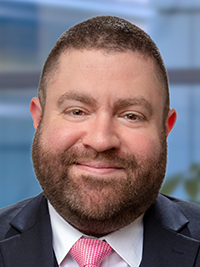
SETH KATZ
Vice president of revenue cycle management at University Health in Kansas City, Missouri

ANDREW LOCKHART
CEO at Fathom in San Francisco, California
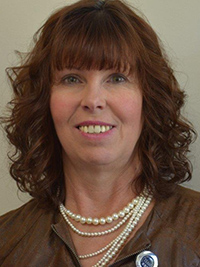
TERRI MEIER
Vice chancellor of revenue cycle at UAMS, in Little Rock, Arkansas
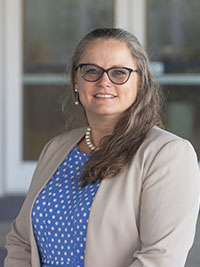
CANDICE POWERS
Chief revenue officer at USA Health in Mobile, Alabama
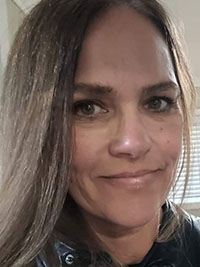
TANYA SRDANOVIC
Director revenue integrity and health information management at Connecticut Children’s in Hartford, Connecticut
About Fathom
Fathom is the leader in autonomous medical coding, applying cutting-edge deep learning and natural language processing (NLP) to produce complete coding results for patient encounters with zero human intervention. We deliver the highest automation rates and the broadest specialty coverage. Our AI technology reduces costs, increases accuracy, strengthens revenue capture, and shortens turnaround times from days to minutes. We carry out a risk-free trial to demonstrate our coding quality before your organization ever pays us a dollar. Fathom’s clients include leading health systems, physician groups, and revenue cycle management companies. Fathom is based in San Francisco with another office in New York.
This published piece is provided solely for informational purposes. HFMA does not endorse the published material or warrant or guarantee its accuracy. The statements and opinions by participants are those of the participants and not those of HFMA. References to commercial manufacturers, vendors, products, or services that may appear do not constitute endorsements by HFMA.






